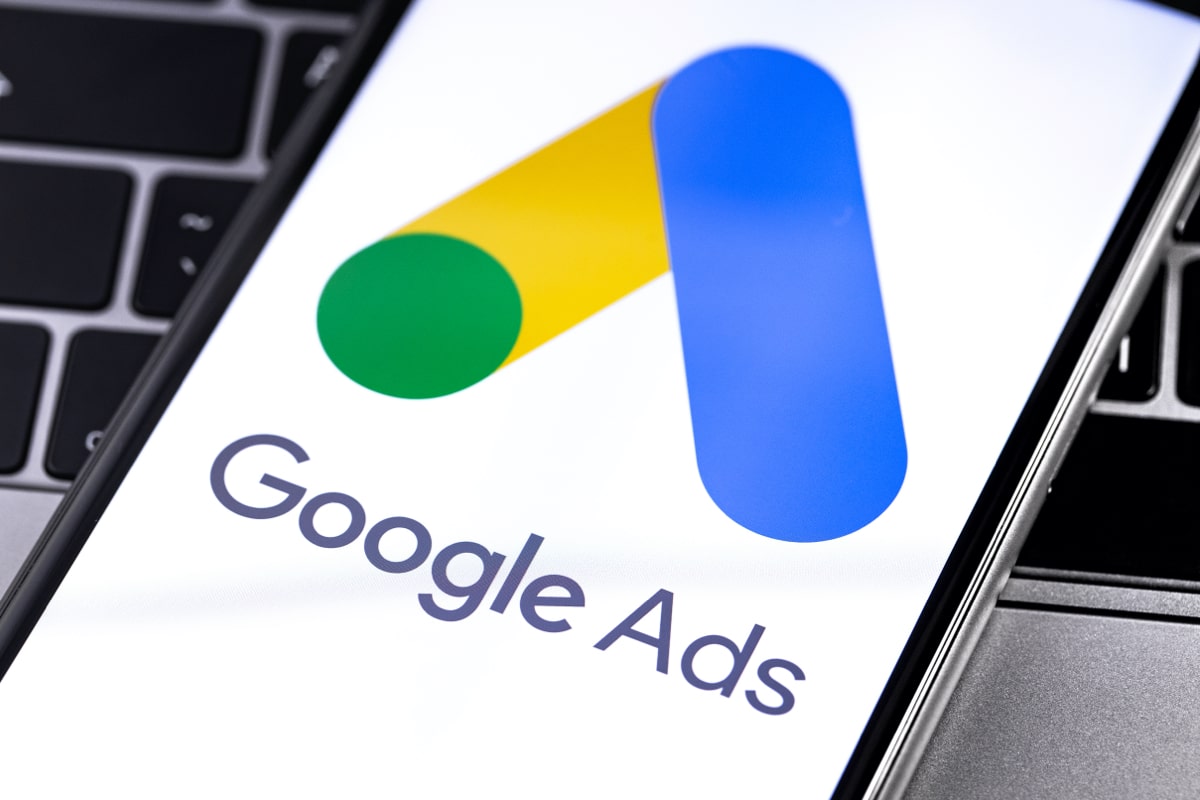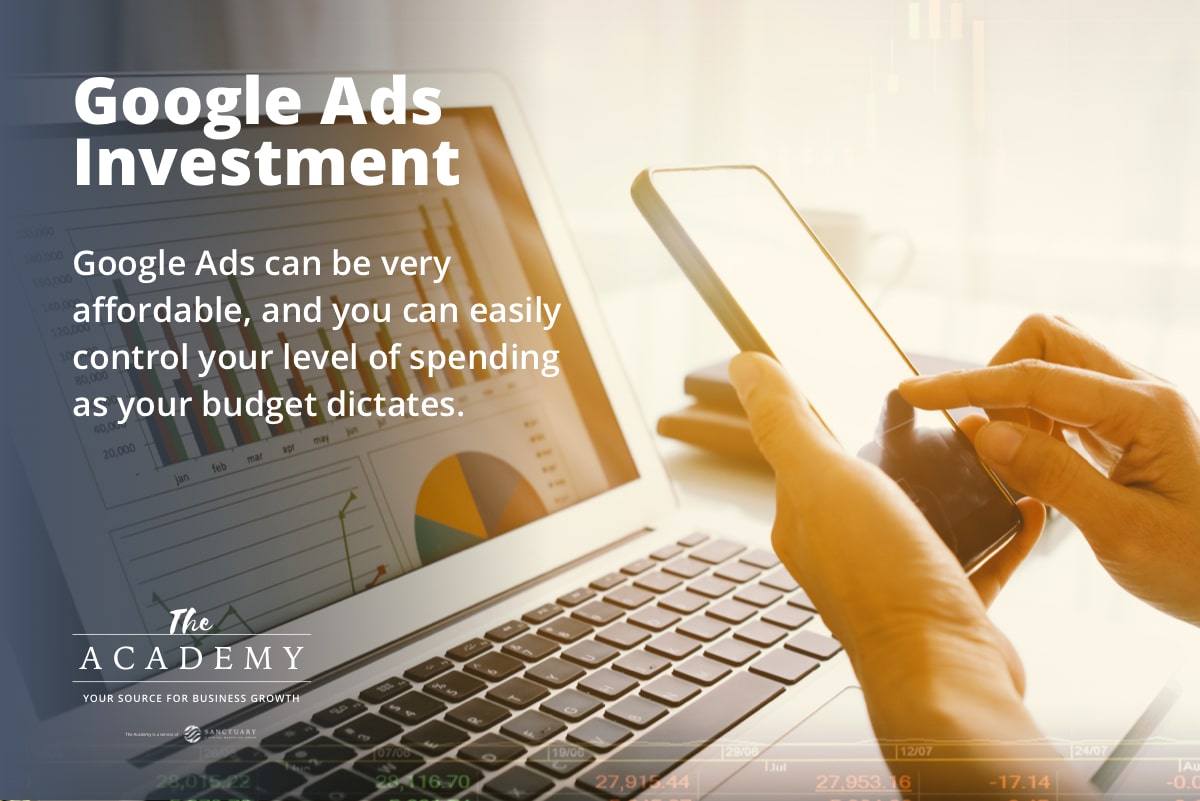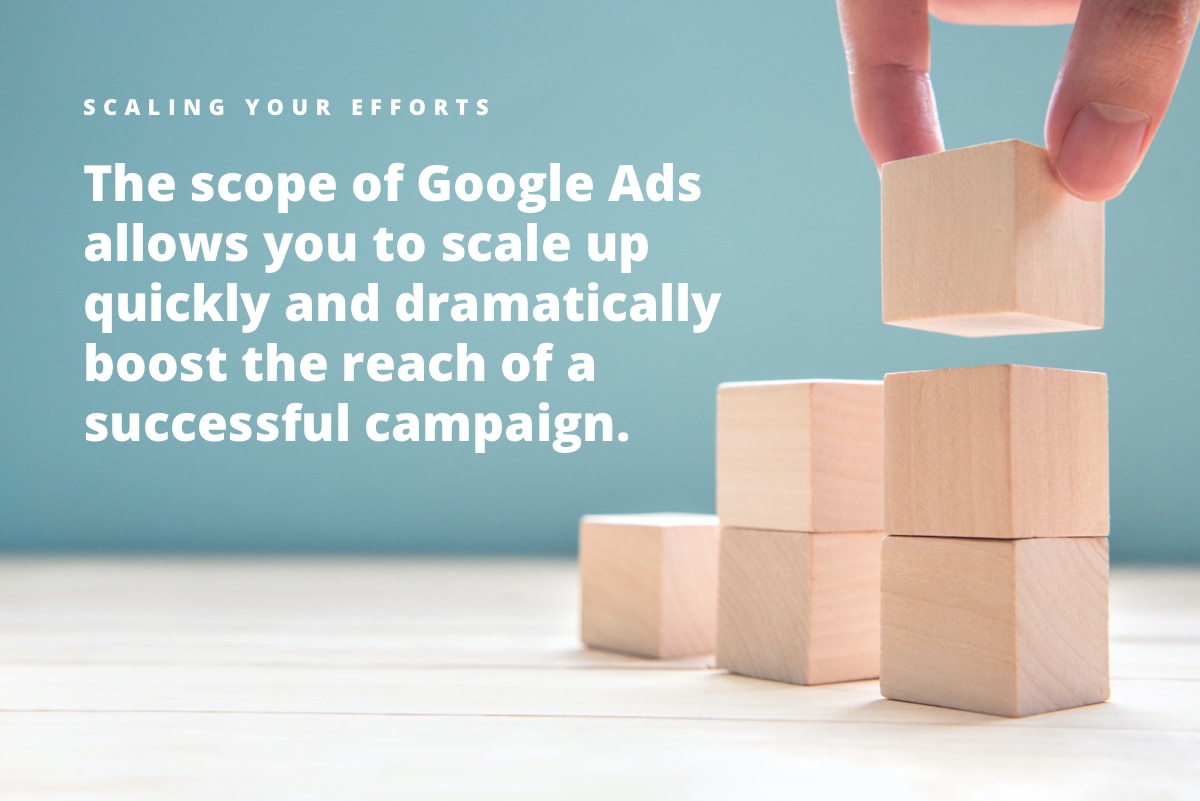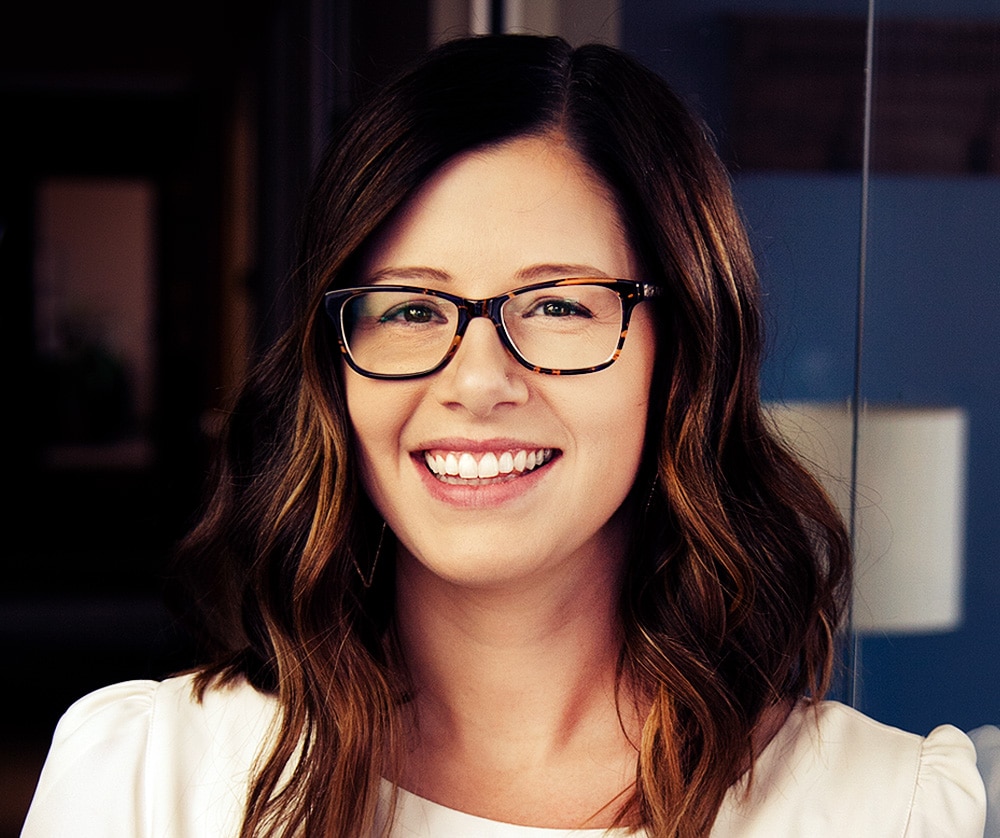
Running paid ads is one of the best ways to promote your business in the digital sphere. While there are other places online to run ads and spread the word about your products or services, Google proves to be the most popular advertising platform. The potential contained within Google Ads is tremendous, but it can be a little intimidating to get started.
In this article, it’s our goal to remove that intimidation and help you get started on the right foot. You might not be a Google Ads expert by the end of this article, but you should have the information you need to start working toward activating your first campaign. Let’s get started!
The Benefits of Using Google Ads
The size of the Google Ads platform is hard to get your head around. Through this one marketing channel, you can reach millions – if not billions – of people all around the world. Based on sheer popularity alone, there should be plenty of benefits to mention when talking about Google Ads, and that does seem to be the case. The list below highlights some of the advantages of exploring this promotional channel.

- Reach. Okay, so we’ve already mentioned this, but it deserves to be highlighted here because of how valuable it is to your marketing efforts. No matter who you are trying to reach with your ads, it’s virtually certain that they can be found through proper targeting in Google Ads. It might take some time to refine your campaigns to find the right people, but given the sheer scale of the platform, those people are out there somewhere.
- Speed. If you have spent any time on other forms of digital marketing, you already know that it can take some time to gain traction in the marketplace. Specifically, traditional SEO tactics are notoriously slow to return results, although those results can be outstanding if you stick with it over the long run. With Google Ads, you can potentially see results almost immediately. Once you set up your ads and activate them, those ads will be displayed for relevant searches and you might start to draw some clicks. For a business that wants to be able to turn on a flow of traffic quickly to test a promotion or push a special event, it’s hard to beat this type of immediate traffic source.
- Affordable. The term “affordable” is subjective, so depending on your budget and niche, Google Ads might not feel quite as affordable as you would like them to be. However, when you step back and compare this form of advertising to some of the other options that are available, you’ll typically find that these PPC ads are a budget-friendly way to get traffic and grow your business. Also, it’s easy to scale your Google Ads campaigns (more on that later), so you can gradually increase your investment as your budget allows.
- Targeting. One of the great powers of Google Ads is the fact that each display of an ad is driven by a search that the user initiated. That means the user had to enter something in the search bar to trigger your ad being displayed – and what they are searching for is a great indication of intent and interest. So, rather than just showing standard display ads on a site and hoping that the people who come by will be interested, you can show targeted ads to people who have searched for something that you know is closely related to what you have to offer. In the end, this should lead to better results both in terms of click-through rates and conversion rates, since the intent of the user is already known.
You will probably find plenty of other advantages to mention once you get started with Google Ads, but this list is a good starting point. Let’s move on to some of the details of how Google Ads works and how you can present your information to potential customers.
Google Ad Types to Consider
There are a few different types of ads that fall under the Google Ads umbrella. All of these ad options can be effective, so it’s not a matter of picking the “best” one – rather, you want to pick the one that is right for the message you want to send. You’ll most likely end up using a blend of ad types to create campaigns that reach your goals.

Here are some of the most popular ad types you’ll want to explore:
- PPC search ads. These are what you’ll likely think of first when considering running Google Ads. When a Google user performs a search, PPC ads show up along with the organic search results. This type of ad is text-based, so you’ll write a headline and some ad copy, and then set up the parameters for when you’d like the ad to be displayed (based on what is searched). You’ll probably want to start here with your Google Ads experience.
- Display ads. In addition to ads on search results, you can also show ads across countless websites within the Google Display Network. These are display ads, which are image-based rather than text ads. It can take a little more work to develop display ads because of the graphical design component, but they are another valuable option to try.
- Video ads. If you have the capability to create video, you can produce video ads and show them on YouTube, which is a Google property. This option takes even more time and effort than display ads, so it’s probably a technique to explore later on after you have some success with simpler options.
How Much Does It Cost to Run Google Ads?

Some businesses are hesitant to get started with any form of digital advertising, including Google Ads, simply because they assume it’s too expensive. In reality, quite the opposite is true. When managed correctly, Google Ads can be very affordable, and you can easily control your level of spending as your budget dictates.
With that said, it’s hard to answer any questions about how much your ads will cost without knowing more about your target market. Simply put, ads in one niche are going to be dramatically more expensive than ads in another, so you’ll have to do a little bit of research to determine how much spending is required to bring in some traffic. In fact, even within the same niche, you can find wide spreads in costs from one keyword to another.
Google Ads are typically based on cost-per-click (CPC). That means that you are charged each time a user clicks on one of your ads and heads to your landing page. If the ad is only shown, but not clicked on, you aren’t charged anything (alternatively, some other types of ads are charged by impression in which you pay a small amount each time the ad is displayed).
To control your spending appropriately, you’ll typically want to set a budget limit based on daily investment. For example, you could decide that you are willing to spend up to $100 per day on these ad campaigns. When you set that limit, your ads will run until the $100 daily spend is hit, and at that point, the ads will be turned off until the next day. With this kind of arrangement, you can keep your ads running day after day without any risk of going over what you intended to spend.
Endlessly Scalable

Part of the popularity of Google Ads is owed to how easy it is to scale up your marketing efforts as you start to find success. To carry forward the example from above, imagine that you start out running ads with a budget of $100 a day (or even $10 per day – it doesn’t really matter what your starting point is).
At this initial investment level, you will be able to track your results and see how your ads are performing. With any luck, your $100 in ad spend will bring in at least that much in revenue, if not more. So, after your ads run for a month at $100 per day, imagine that your revenue based on that investment is $120 per day.
That would be a big win, and in a 30-day month, you would have made $600 ($20 per day, times 30 days). That’s great, but the fun is only beginning. At this point, you may decide to turn up your investment dramatically, having proven that your ads work in the real world and convert into actual profit. So, instead of spending $100 per day, you now spend $1,000 per day, and your monthly profit may look more like $6,000 than $600. These results won’t always be perfectly linear, of course, but the scope of Google Ads allows you to scale up quickly and dramatically boost the reach of a successful campaign.
Other Important Notes
To wrap up this article, we’d like to highlight a few other important notes regarding Google Ads that we have not gotten to so far.
- Landing pages are critical. It’s easy to fall in love with the idea of getting plenty of traffic to your site to Google Ads, but you’ll be paying for nothing if you aren’t able to convert those clicks into purchases once they land on your site. Invest plenty of time and effort into building a great landing page to improve your conversion rate and hopefully create a profitable campaign.
- Don’t forget organic traffic. No matter how long you run Google Ads, they will never be free – you’ll always be paying for the traffic you receive. That’s fine, but it would be best to compliment this paid traffic with some “free” traffic in the form of clicks in the organic search results. In other words, be sure to work hard on standard SEO practices along the way so you can gradually climb the rankings and secure as much organic traffic as possible.
- Leverage local capabilities. If you run the type of business that has a physical location serving local customers, make sure to pay particular attention to the way Google Ads can enable you to target those people who are physically close to your location and interested in what it is you have to offer.
The nature of the Google Ads platform makes it easy to get started and test out the performance of your new ads for just a modest investment. With that in mind, what are you waiting for? For just some of your time and a very small amount of money, you can wade into this advertising pool and see if you can attract some quality leads to your site. Good luck!
Most Popular Articles

Seeing Favicons in Your Google Search Results? Here’s Why…
Have you noticed anything different in your Google Search results lately? Google added tiny favicon icons to its organic search results in January. It was…

Business Growth and Digital Marketing News & Tips 11-17-24
Are you encouraging and rewarding innovation? Lee Cockerell is the former Executive Vice President of Operations at Walt Disney World. A lover of traditional red…

Business Growth and Digital Marketing News & Tips 11-27-24
A culture of gratitude "Feeling gratitude and not expressing it is like wrapping a present and not giving it." – William Arthur Ward Beyond being…








